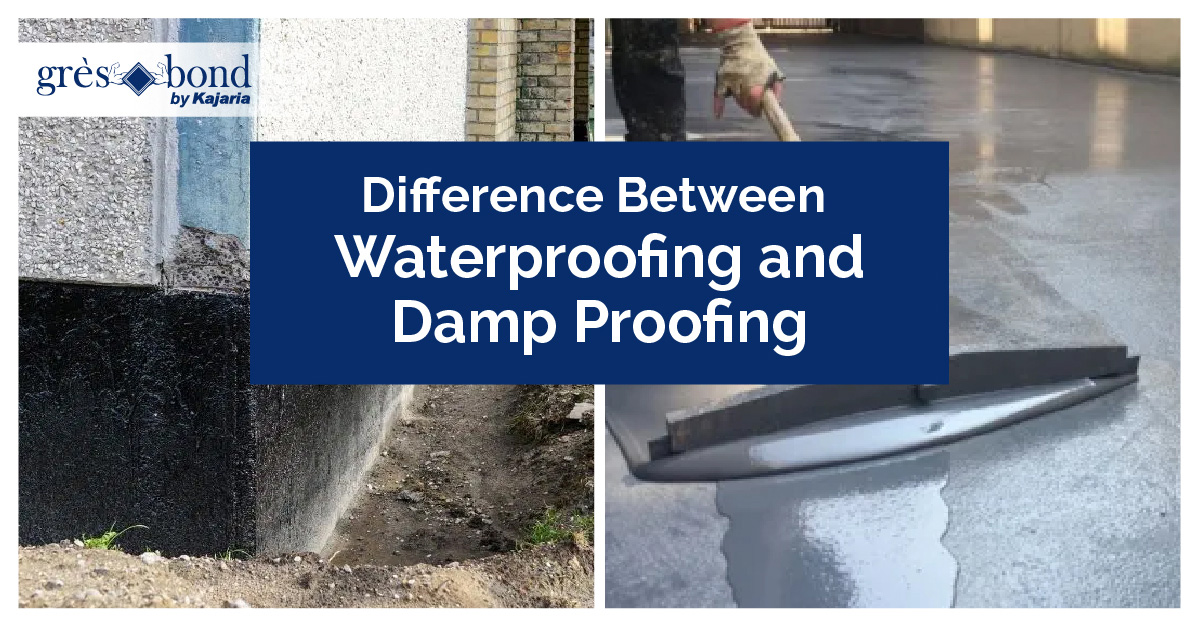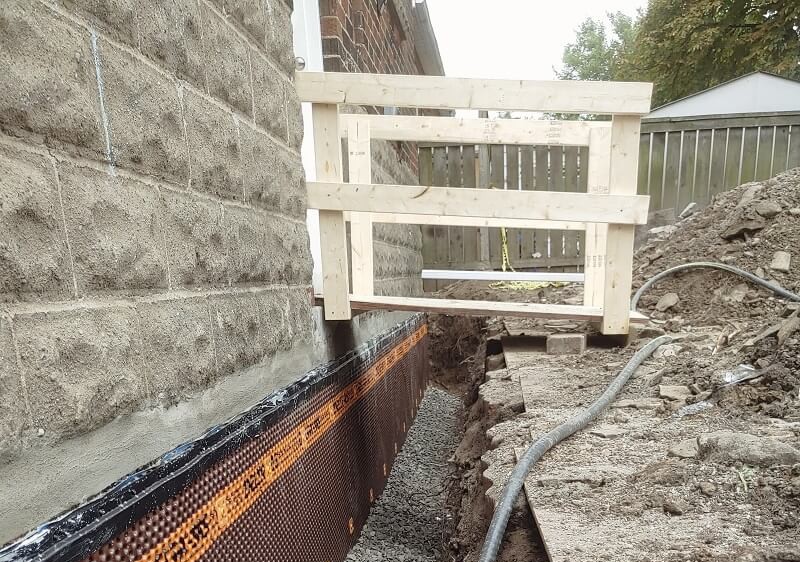Top 5 causes of penetrating damp and how mould removal newcastle can help
Recognizing the Importance of Damp Proofing in Averting Structural Damages
Moist proofing serves as an important protection versus dampness infiltration in structures. This protective action can avoid considerable architectural damages, yet many homeowner remain unaware of its relevance. Identifying the indicators of wetness and recognizing the numerous solutions offered can be vital. Nonetheless, ignoring wet proofing can bring about serious effects. What are the certain threats and solutions that homeowner should think about?
What Perspires Proofing and Exactly How Does It Function?
Damp proofing works as a crucial obstacle versus dampness intrusion in buildings. damp removal newcastle. This procedure involves applying particular products and methods to avoid water from penetrating walls, floors, and other architectural components. Usually, moist proofing can be achieved through the installation of wet proof membranes, coverings, or making use of specialized sealants.These methods work by creating a safety layer that inhibits wetness movement, making sure that the indoor environment continues to be healthy and balanced and dry. Damp proofing is especially vital in areas susceptible to high humidity or groundwater, as it assists preserve the honesty of the framework over time.Moreover, reliable wet proofing adds to power performance by preventing warmth loss connected with damp atmospheres. By attending to prospective moisture concerns prior to they rise, damp proofing acts as a positive action in safeguarding structures from the destructive effects of water damage, eventually extending their life expectancy and keeping their value
Common Indicators of Wetness in a Structure
Wetness issues within a structure can materialize via a number of visible signs that suggest the existence of wetness. One popular sign is the look of water stains on ceilings or wall surfaces, which frequently suggests dampness seepage. Additionally, bubbling or peeling off paint can recommend that excess humidity is entraped underneath the surface area, causing damage. One more usual indicator is the presence of mold and mildew, which grow in moist problems and can typically be recognized by their musty smell. Furthermore, a rise in moisture levels can trigger condensation on windows and other surfaces, highlighting dampness problems. Finally, distorted or unequal floor covering might signal underlying moisture that jeopardizes architectural stability. Recognizing these signs early can help mitigate prospective damages and maintain a safe living setting. Normal examinations and timely activity are important in resolving wetness concerns before they escalate.
The Dangers of Overlooking Damp Proofing
Ignoring damp proofing can lead to significant hazards to a structure's structural integrity, as moisture accumulation may damage wall surfaces and foundations. Furthermore, long term moisture produces an atmosphere for mold and mildew development, posturing significant carcinogen to residents. Dealing with these risks is crucial for making certain both safety and security and long life of the residential or commercial property.
Structural Integrity Risks
They subject their residential properties to considerable architectural integrity risks when home owners forget the importance of reliable damp proofing. Long term moisture seepage can bring about the development of mold and mildew, which weakens fundamental components and can endanger overall security. In addition, excess dampness can wear down concrete and brickwork, resulting in fractures and architectural failings. Wood components are specifically susceptible; they can rot and lose load-bearing ability, presenting significant dangers to the structure's framework. Neglected moist conditions may draw in parasites, such as termites, which further intensify architectural wear and tear. Eventually, overlooking damp proofing steps can lead to expensive repair services and potential safety and security dangers, highlighting the crucial role of positive wet monitoring in maintaining the honesty of properties.
Carcinogen Issues
How can a relatively small oversight lead to severe health and wellness threats? Ignoring wet proofing can create an environment favorable to mold growth, which positions substantial health and wellness risks. Mold spores can cause allergies, respiratory system issues, and various other health and wellness complications, particularly in vulnerable populaces such as children, the senior, and people with pre-existing conditions. In addition, consistent wetness can bring in parasites like bugs and rats, which bring illness that even more jeopardize health. The presence of dampness also adds to a decrease in indoor air quality, aggravating bronchial asthma and various other breathing disorders. The failing to deal with wet concerns not only intimidates structural honesty but additionally jeopardizes the wellness of owners, highlighting the essential requirement for effective moist proofing procedures.
Various Sorts Of Damp Proofing Solutions
Different variables can contribute to damp concerns in structures, choosing the appropriate damp proofing option is crucial for preserving architectural honesty. Numerous alternatives are available, each customized to certain conditions.One typical solution is a damp-proof membrane (DPM), typically made of polyethylene or bitumen, which is installed in wall surfaces and floors to avoid dampness ingress. An additional alternative is damp-proof programs (DPC), which are layers of waterproof material positioned within wall surfaces to obstruct climbing damp.Chemical damp proofing involves infusing waterproofing chemicals right into walls to produce a barrier versus dampness. Furthermore, external treatments such as tanking, which includes applying a waterproof layer to the outside of foundations, can be efficient in avoiding water penetration.Each service has its benefits and is chosen based on the building's details problems, environmental conditions, and long-lasting maintenance considerations, guaranteeing suitable protection versus damp-related damage.

The Cost of Damp Damages vs. Avoidance
Understanding the financial effects of moist damage compared to prevention highlights the significance of proactive steps. The prices related to damp damages can be significant, including fixings to structural components, mold remediation, and possible health-related expenditures. House owners may deal with significant economic pressure if considerable damages happens, leading to boosted insurance coverage premiums and lost residential property value.In comparison, buying moist proofing solutions is typically even more affordable. Preliminary expenditures for avoidance approaches, such as mounting damp-proof membranes or boosting drainage systems, are frequently surpassed by the long-term savings from staying clear of expensive fixings. Furthermore, stopping damp problems can improve a residential property's total value and allure, making it a wise financial investment. When assessing the price of wet damage versus prevention, it comes to be clear that taking positive actions can secure financial interests and maintain the stability of the residential property with time.
Selecting the Right Damp Proofing Method for Your Residential property
Which damp proofing technique is most ideal for a particular building typically depends upon various variables, consisting of the structure's age, existing wetness concerns, and neighborhood environmental problems. For older structures, traditional approaches get more info such as bitumen membranes or cementitious finishes may be a lot more effective, as they can supply a durable obstacle against increasing wet. In comparison, newer buildings could take advantage of contemporary solutions like injected damp-proof programs, which are less intrusive and can be customized to specific moisture challenges.Additionally, residential or commercial properties in locations with high water tables or heavy rains may require more sophisticated strategies, such as cavity wall drain systems or exterior waterproofing. Homeowners should additionally consider the certain products utilized in their building's building, as some techniques may not be compatible. Inevitably, a complete analysis by a professional can assist property proprietors in picking one of the most reliable wet proofing approach customized to their one-of-a-kind conditions.
Preserving Your Damp Proofing System Gradually
Routine maintenance of a moist proofing system is essential for ensuring its lasting effectiveness and shielding a home from moisture-related damage. Building proprietors need to perform routine evaluations to recognize any type of indicators of wear or concession in the damp proofing layer. This consists of checking for cracks, peeling paint, or mold and mildew development, which may show moisture intrusion.Additionally, it is a good idea to clean gutters and downspouts on a regular basis to protect against water buildup around the foundation. If deterioration is observed.Engaging professional solutions for regular analyses can even more improve the durability of the system, reapplying sealers or membrane layers might be required. These specialists can give insights right into potential susceptabilities and recommend prompt repair services.
Frequently Asked Concerns
For How Long Does Damp Proofing Therapy Last Prior To Requiring Repairs?
The durability of moist proofing treatment normally ranges from 10 to thirty years, depending on factors such as the technique utilized, ecological problems, and upkeep methods. Regular assessments can aid identify when repair services might be required.
Is DIY Damp Proofing Effective Compared to Professional Providers?
The performance of do it yourself damp proofing varies significantly. mould removal newcastle. While some people may achieve adequate results, specialist solutions usually guarantee detailed solutions, leveraging proficiency and top quality materials to avoid future issues more reliably than many do it yourself attempts
Can Damp Proofing Improve Indoor Air High Quality?
The concern of whether damp proofing can enhance indoor air high quality arises regularly. Efficient moist proofing reduces wetness levels, consequently minimizing mold and mildew growth and irritants, inevitably contributing to a healthier interior setting for owners.
Exist Particular Regulations for Damp Proofing in Various Locations?
Rules for moist proofing differ by area, usually influenced by neighborhood structure codes and ecological problems. Conformity guarantees reliable moisture control, guarding frameworks and promoting safety and security, which highlights the necessity for adherence to these certain regulations.

What Are the Long-Term Conveniences of Proper Damp Proofing?
The lasting advantages of correct moist proofing consist of improved architectural integrity, minimized maintenance expenses, improved indoor air top quality, and raised building worth. These benefits add to a much healthier living atmosphere and long term lifespan of structures. Generally, damp proofing can be attained via the installment of wet proof membranes, coverings, or the usage of specialized sealants.These techniques work by producing a safety layer that prevents dampness movement, guaranteeing that the interior setting continues to be healthy and completely dry. Damp proofing is especially vital in areas susceptible to high humidity or groundwater, as it assists maintain the honesty of the structure over time.Moreover, reliable moist proofing contributes to energy effectiveness by preventing heat loss linked with moist environments. Disregarding moist proofing can lead to significant risks to a building's structural stability, as moisture accumulation may weaken foundations and walls (mould removal newcastle). Different elements can add to damp concerns in structures, selecting the ideal moist proofing service is necessary for preserving architectural honesty. Which damp proofing approach is most ideal for a specific property frequently depends on numerous aspects, including the structure's age, existing wetness issues, and regional ecological problems